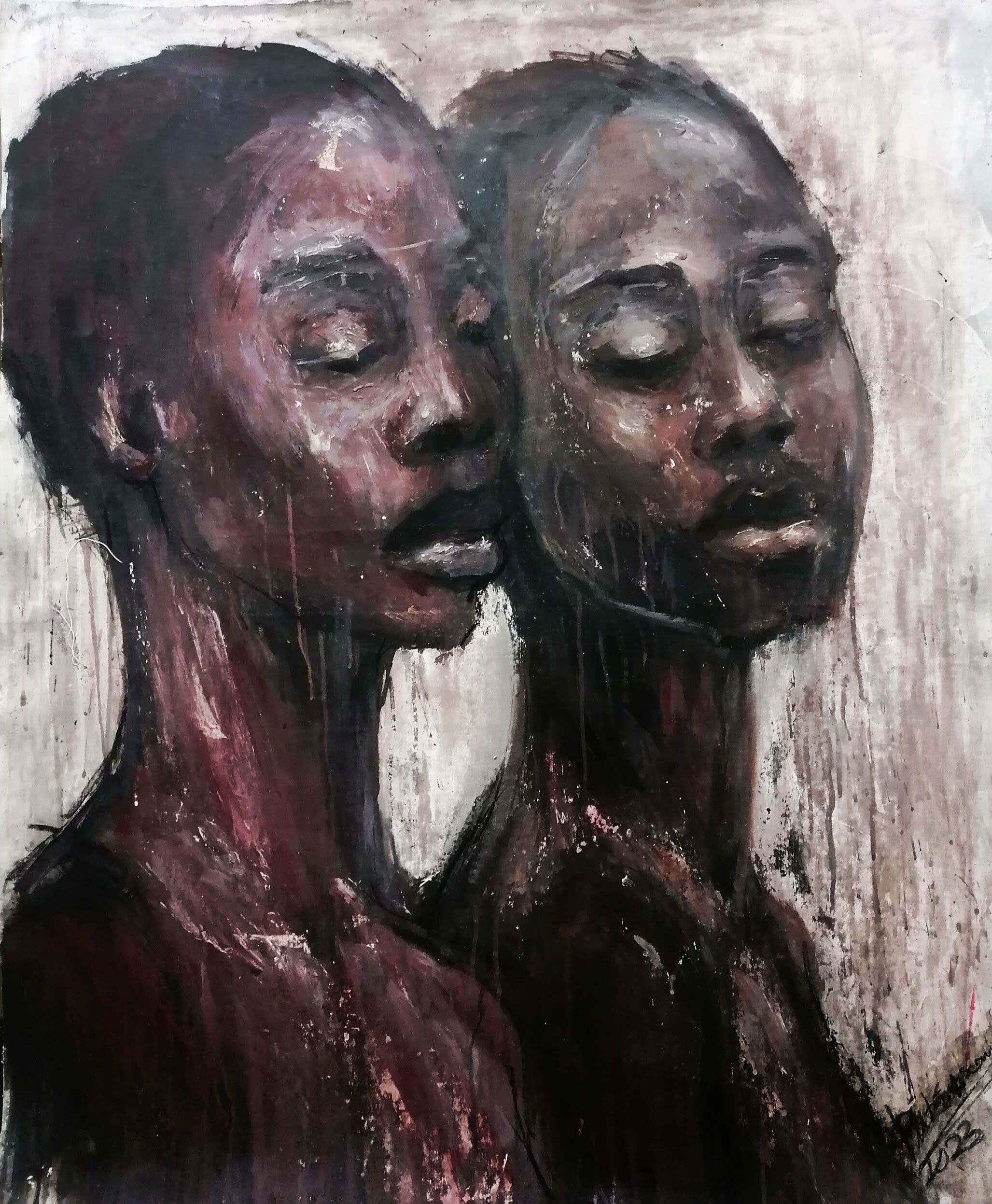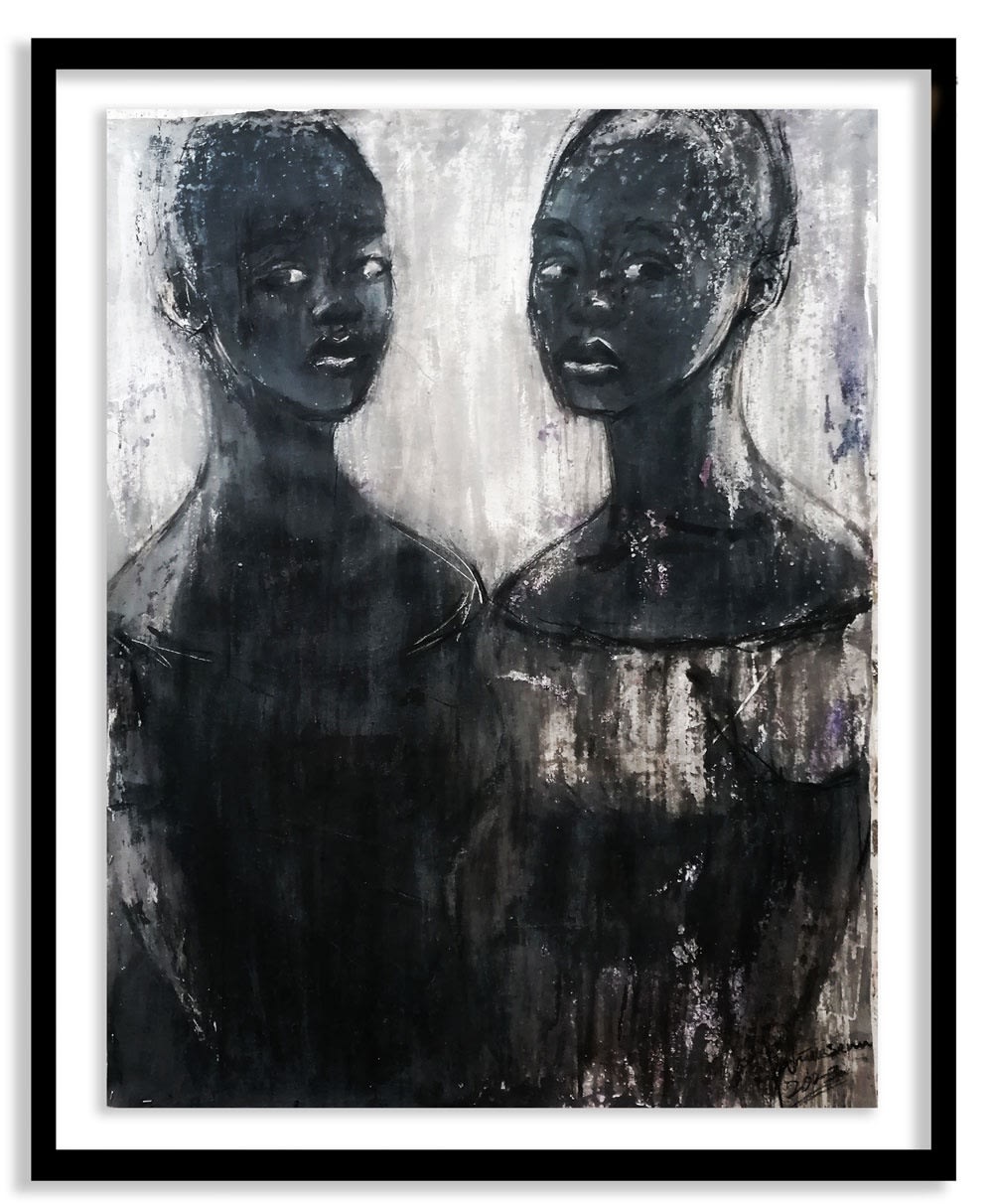Q: A significant portion of your work is portraits of women, particularly Black women. Can you please explain why.
A: I converse with women from the community where I live. They are like my sisters. We share a lot of things in common. The stories that women go through in their daily lives, which is what I focus on when I converse with them, is something that touches me.
Q: You use charcoal, and acrylic paint on canvas applied in the form of a wash, with the wash being a metaphor that signifies the harsh truths that women must continually wash away to forget daily experiences they undergo to move on. Can you please elaborate on this.
A: I use wash to symbolise the tears shared between women and their misplaced and hidden identity. I come to the studio to sketch and I want to tell a story about the person when I sketch this person on a canvas. The way I am trying to paint is that I am trying to tell a story. Each mark that I apply on the canvas should represent something, be it positive or negative, that my subject goes through.
Q: Your colour palette is rather distinct, often moving between brown, pink and black. I read that this colour palette symbolises three things: womanhood, passing time and it reflects the time required for healing. Why choose to represent these three elements with these colours in particular?
A: When I started painting, I started with pink, then I shifted to black and brown. To me, black represents Africa, but also suggests an element of etching. With pink, I wish to evoke the idea of femininity because I portray women and for the softness in my work. The brown is for healing.





